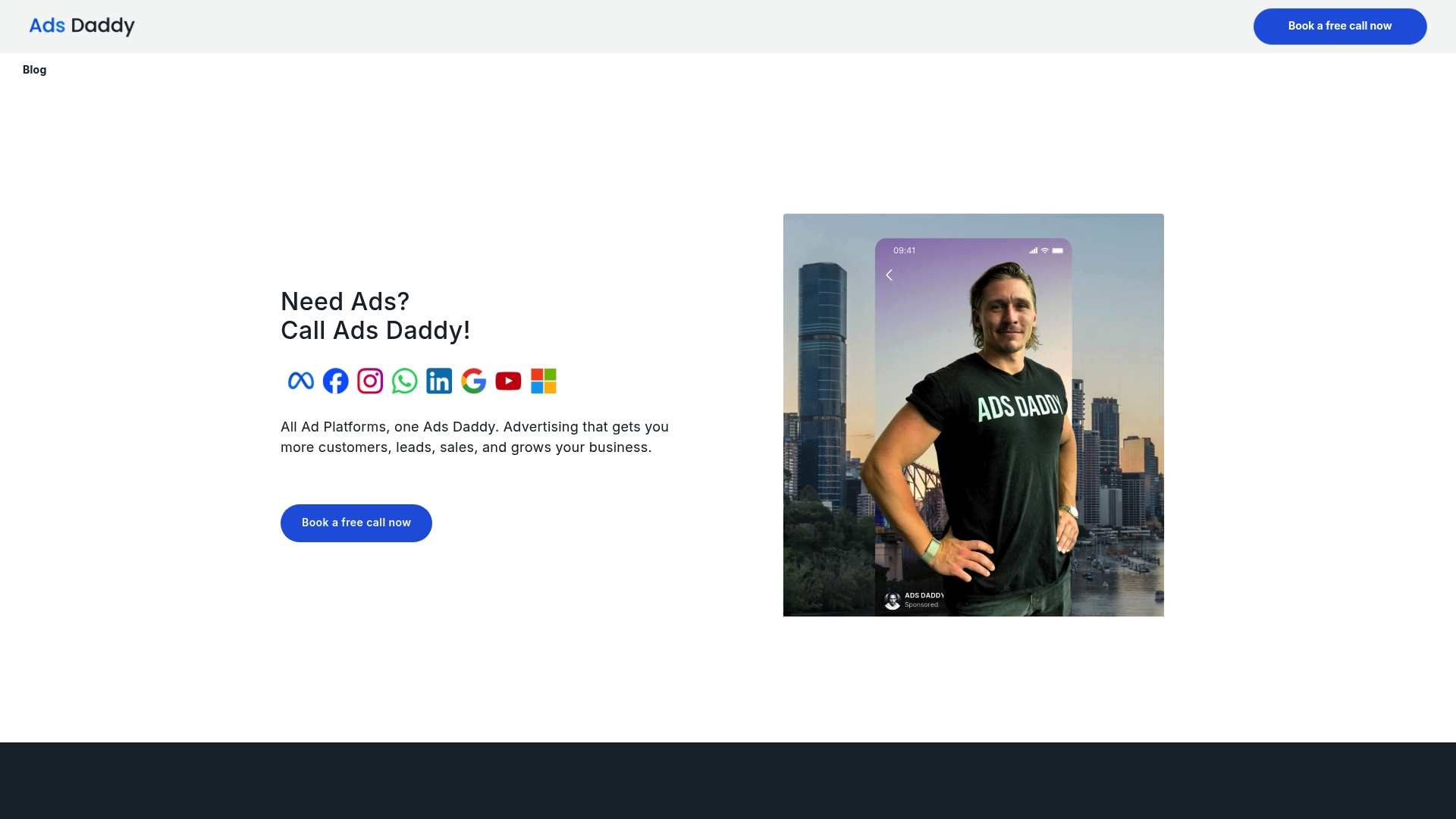Did you know that people now spend more than seven hours a day engaging with digital content across different devices? This presents brands with a massive opportunity to connect with audiences wherever they are, but it also means the competition for attention is fiercer than ever. Mastering cross-platform advertising opens the door for businesses to stay top-of-mind, shape consistent messaging, and reach customers during key moments throughout their daily routines.
Table of Contents
- What Is Cross-Platform Advertising?
- Major Platforms And Key Ad Formats
- How Cross-Platform Campaigns Actually Work
- Common Traps In Multi-Channel Ads
- Proven Strategies For Maximum ROI
Key Takeaways
| Point | Details |
|---|---|
| Cross-Platform Advertising | Involves deploying ad campaigns across multiple digital environments to enhance brand visibility and engagement. |
| Key Benefits | Offers broader audience reach, consistent messaging, and improved targeting, ultimately maximizing return on advertising spend. |
| Campaign Mechanics | Operates through audience identification, strategic placement, and continuous tracking, creating an omnipresent brand experience. |
| Common Pitfalls | Challenges include tracking complexities, budget management issues, and inconsistent branding, which require proactive strategies to overcome. |
What Is Cross-Platform Advertising?
Cross-platform advertising represents a strategic digital marketing approach designed to amplify brand visibility by deploying ad campaigns seamlessly across multiple online environments. Digital platforms become your playground, allowing businesses to craft consistent messaging that reaches potential customers wherever they scroll, click, or browse.
According to the Native Advertising Institute, cross-platform advertising involves running native ad campaigns across various digital touchpoints including websites, mobile apps, and social media platforms. The core objective? Maximizing campaign impact by creating an omnipresent marketing strategy that doesn’t just target one channel, but strategically blankets multiple digital spaces.
Think of cross-platform advertising like building a marketing network that works 24/7. Your potential customers might encounter your brand on Facebook during breakfast, see a display ad while reading news online at lunch, and then catch a sponsored Instagram post during their evening scroll. Learn more about ad targeting strategies that can supercharge this approach.
Key benefits of cross-platform advertising include:
- Broader audience reach
- Consistent brand messaging
- Enhanced engagement opportunities
- More sophisticated targeting capabilities
- Improved return on advertising spend
By diversifying your ad placements, you’re not just hoping to catch someone’s attention – you’re strategically positioning your brand across multiple digital landscapes.
Major Platforms And Key Ad Formats
Cross-platform advertising transforms digital marketing by leveraging a diverse array of online and offline channels to deliver targeted messaging. According to KingStarMedia, these channels span an impressive range including social media, digital out-of-home (DOOH), connected TV (CTV), linear television, radio, podcasts, print, and in-app advertising.
The strategic complexity of cross-platform advertising lies in its ability to display ads seamlessly across multiple devices and platforms. Learn more about paid advertising strategies that can help you navigate this intricate landscape. Research from WideOrbit highlights that successful cross-platform approaches focus on selling ad inventory across varied media platform types, including linear broadcast, streaming, on-demand, and digital display.
Key platforms for cross-platform advertising include:
- Social Media Platforms
- Twitter/X
- Search Advertising
- Google Ads
- Microsoft Bing Ads
- Display Networks
- Google Display Network
- Programmatic Ad Platforms
Ad formats vary dramatically across these platforms, ranging from image and video ads to carousel, text-based, and interactive formats. The goal remains consistent: create a cohesive brand narrative that resonates with your target audience, regardless of where they encounter your message.
Here’s a summary of major cross-platform advertising channels and their typical ad formats:
| Channel Type | Examples | Common Ad Formats |
|---|---|---|
| Social Media | Facebook Twitter/X |
Image ads Video ads Carousel ads |
| Search Advertising | Google Ads Microsoft Bing Ads |
Text ads Shopping ads |
| Display Networks | Google Display Network Programmatic Platforms |
Banner ads Interactive ads |
| Audio/Video | Radio Podcasts Connected TV |
Audio spots Video pre-rolls |
| Digital Out-of-Home | Billboards Transport screens |
Static images Short videos |
How Cross-Platform Campaigns Actually Work
Cross-platform advertising operates like a sophisticated digital marketing ecosystem, strategically tracking and engaging potential customers across multiple touchpoints. According to KingStarMedia, the core mechanism involves following consumers through the entire purchase funnel, maximizing interaction opportunities and building brand credibility.
The campaign works through a complex tracking and targeting system that creates a unified approach across different platforms. Explore our guide on ad targeting strategies to understand the intricate mechanics behind this process. Research from WideOrbit emphasizes the importance of maintaining consistent targeting, measurement, reporting, and invoicing across all selected platforms.
Here’s a breakdown of how cross-platform campaigns function:
- Audience Identification
- Define target demographic
- Create detailed customer personas
- Map potential digital touchpoints
- Strategic Placement
- Select relevant platforms
- Design platform-specific ad creatives
- Optimize ad delivery timing
- Continuous Tracking
- Monitor user interactions
- Analyze cross-platform engagement
- Refine targeting in real-time
The ultimate goal is creating a seamless, omnipresent brand experience that follows potential customers across their digital journey, increasing the likelihood of conversion through repeated, strategic exposure.
Common Traps In Multi-Channel Ads
Cross-platform advertising isn’t a walk in the park. Strategic complexity can quickly turn into a minefield of potential pitfalls that can derail your entire marketing effort. According to the Native Advertising Institute, marketers face numerous challenges including complex tracking, increased costs, data integration issues, and the constant risk of inconsistent branding.
Learn how to optimize lead generation ads to avoid these common multi-channel advertising traps. Research from WideOrbit highlights that miscommunication often stems from inconsistent language and undefined terms, which can misalign strategies, tools, and team efforts.
Most Common Cross-Platform Advertising Traps:
- Tracking Troubles
- Fragmented attribution models
- Inconsistent data collection
- Misaligned performance metrics
- Budget Blunders
- Uncontrolled spending across platforms
- Inefficient resource allocation
- Lack of centralized budget management
- Branding Bloopers
- Inconsistent messaging
- Misaligned visual identities
- Platform-specific tone variations
Successful cross-platform advertising requires a laser-focused approach that anticipates and neutralizes these potential landmines. By understanding these traps, you can create a more cohesive, efficient, and impactful multi-channel advertising strategy that delivers real results.
Proven Strategies For Maximum ROI
Maximizing return on investment in cross-platform advertising requires a strategic and holistic approach that goes beyond simple ad placement. According to the Native Advertising Institute, successful campaigns demand a unified strategy that precisely aligns with campaign goals and meticulously targets audience preferences across multiple platforms.
Discover expert strategies for client acquisition that can transform your multi-channel advertising efforts. Research from iCandy Design emphasizes the critical importance of maintaining a consistent message and visual identity across every channel to ensure campaign recognition and guide potential customers toward conversion.
Key Strategies for Maximizing Cross-Platform ROI:
- Unified Campaign Architecture
- Develop consistent brand messaging
- Create platform-adaptive creative assets
- Establish clear conversion pathways
- Advanced Analytics Integration
- Implement cross-platform tracking
- Use unified performance metrics
- Continuously optimize ad spend
- Audience-Centric Targeting
- Build comprehensive audience personas
- Leverage platform-specific targeting tools
- Personalize ad experiences
Successful cross-platform advertising isn’t about being everywhere at once – it’s about being strategically present, with laser-focused messaging that resonates across different digital environments and drives measurable business results.
Ready to Conquer Cross-Platform Advertising Confusion?
It’s easy to feel overwhelmed when juggling campaigns across Facebook, Instagram, Google, and beyond. Many businesses struggle with tracking effectiveness, staying on budget, and keeping their brand message consistent. If you’ve read about complex attribution models and the importance of seamless ad creative in our Complete Guide to Cross-Platform Advertising, you’ll know how critical expert campaign management is for real growth.

Stop letting complexity stall your progress. The AdsDaddy.com team specialises in turning cross-platform chaos into measurable results. We manage every detail, from targeting to analytics, using data-driven strategies and top tools like Meta for Business and Klaviyo. Discover how we help businesses achieve bigger returns with less stress through our tailored advertising services. See for yourself how simple it can be to get better leads, more sales, and stronger brand impact. Take action now and explore all that AdsDaddy.com has to offer – your next breakthrough campaign is waiting.
Frequently Asked Questions
What is cross-platform advertising?
Cross-platform advertising is a digital marketing strategy that promotes brand visibility by running ad campaigns across multiple online platforms, such as social media, websites, and mobile apps.
What are the benefits of cross-platform advertising?
Key benefits include broader audience reach, consistent brand messaging, enhanced engagement opportunities, sophisticated targeting capabilities, and improved return on advertising spend.
How do cross-platform campaigns work?
These campaigns function by tracking potential customers across various platforms, maintaining a unified approach to engage them throughout the purchase journey, and optimizing ads based on user interactions.
What are common challenges in cross-platform advertising?
Common challenges include tracking difficulties, budget management issues, and maintaining consistent branding across different platforms.


